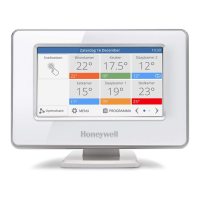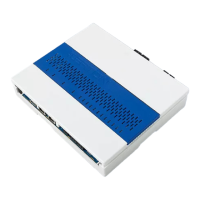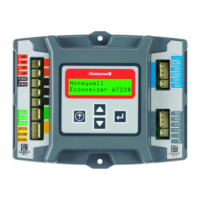MICROPROCESSOR-BASED/DDC FUNDAMENTALS
137
ENGINEERING MANUAL OF AUTOMATIC CONTROL
Zone- and system-level controllers should be equipped with
a communications port. This allows dynamic data, setpoints,
and parameters to be passed between a local operator terminal,
a central building management system, and/or other
controllers. Data passed to other controllers allows sensor
values to be shared and interaction between zone-level
programs and system-level programs to be coordinated. For
example, night setback and morning warmup can be
implemented at the zone-level controller based on operational
mode information received from the system-level controller.
CONTROLLER SOFTWARE
Although microprocessor-based controller hardware
governs, to some extent, how a controller is applied, software
determines the functionality. Controller software falls basically
into two categories:
1. Operating software which controls the basic operation
of the controller.
2. Application software which addresses the unique control
requirements of specific applications.
OPERATING SOFTWARE
Operating software is normally stored in nonvolatile memory
such as ROM or PROM and is often referred to as firmware.
Operating software includes the operating system (OS) and
routines for task scheduling, I/O scanning, priority interrupt
processing, A/D and D/A conversion, and access and display
of control program variables such as setpoints, temperature
values, parameters, and data file information. Tasks are
scheduled sequentially and interlaced with I/O scanning and
other routine tasks in such a way as to make operation appear
almost simultaneous. However, an external event such as an
alarm or a request to execute an energy management program,
can require that normal operations be suspended until the higher
priority task is serviced. These requests are processed by
priority interrupt software. The interrupt causes the current
operation to cease, and all data held in registers and
accumulators pertinent to the interrupted programs is
temporarily stored in memory. Once the interrupt request is
processed, all data is returned to the proper registers, and the
program resumes where it left off. Multiple levels or prioritized
interrupts are provided. The effect of these interrupts is
transparent to the application that the controller is controlling.
APPLICATION SOFTWARE
Application software includes direct digital control, energy
management, lighting control, and event initiated programs
plus other alarm and monitoring software typically classified
as building management functions. The system allows
application programs to be used individually or in combination.
For example, the same hardware and operating software can
be used for a new or existing building control by using different
programs to match the application. An existing building, for
example, might require energy management software to be
added to the existing control system. A new building, however,
might require a combination of direct digital control and energy
management software.
DIRECT DIGITAL CONTROL SOFTWARE
DDC software can be defined as a set of standard DDC
operators and/or high-level language statements assembled to
accomplish a specific control action. Key elements in most
direct digital control programs are the PID and the enhanced
EPID and ANPID algorithms. For further information, refer
to the Control Fundamentals section.
While the P, PI, PID, EPID, and ANPID operators provide
the basic control action, there are many other operators that
enhance and extend the control program. Some other typical
operators are shown in Table 1. These operators are computer
statements that denote specific DDC operations to be
performed in the controller. Math, time/calendar, and other
calculation routines (such as calculating an enthalpy value from
inputs of temperature and humidity) are also required.
The use of preprogrammed operators saves time when
writing control sequences and makes understanding of the
control sequence the equivalent of reading a pneumatic control
diagram. Programming schemes often allow program operators
to be selected, positioned, and connected graphically. The
alternative to using preprogrammed operators is to write an
equivalent control program using the programming language
furnished for the controller.

